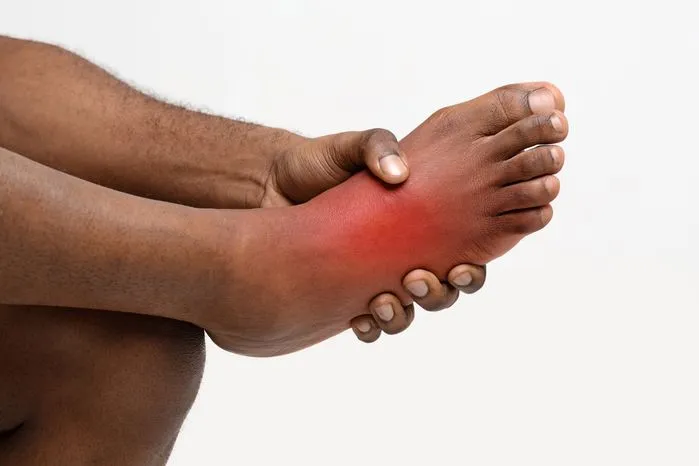
The Releford Institute’s Opinion on Patients With Diabetes, Plantar Fasciitis and Ingrown Toenails
In our opinion, seeing a podiatrist is essential when it comes to managing conditions like diabetes, plantar fasciitis, and ingrown toenails. For people with diabetes, regular foot checkups are vital to catch issues like ulcers or infections before they become serious. When it comes to plantar fasciitis, a podiatrist can provide treatments that help relieve pain and improve mobility. And for something as painful as ingrown toenails, we can address it quickly and help prevent it from happening again.
At The Releford Institute, we make sure each patient gets the personalized care they need to stay comfortable and healthy. In our experience, seeing a podiatrist for any of these conditions can truly make a big difference in your foot health and overall well-being.
Key Takeaways
- Podiatrists help diabetes patients by pinpointing complications such as infections and ulcers during routine check-ups.
- They evaluate foot structure and lifestyle factors for those with plantar fasciitis. They create personalized treatment plans that include exercises and supportive gear.
- Patients with ingrown toenails may also seek treatment from them.
- These professionals also offer education on preventive measures.
- Patients with pre-existing conditions such as those with impaired blood sugar levels should prioritize regular podiatric care.

What is the Role of a Podiatrist?
Podiatrists like us help relieve pain and prevent complications from conditions that affect foot and ankle health. For example, patients who struggle with their uncontrolled glucose levels may experience numbness and tingling sensations on their toes or feet.
As your foot health champions, this is where we come to your rescue when foot troubles start to affect your daily routine. They give your feet a thorough examination, identify issues, and suggest ways to enhance your foot health. However, our job doesn't end at merely addressing symptoms. We dig deeper, aiming to uncover the actual cause of your discomfort.
You can see us doctors as foot detectives. Solving crimes is not our primary role but rather is about discovering the illness of patients based on symptoms they experience. They look out for signs such as skin color changes, stubborn sores, or even alterations in your walk. Your doctor may require a monofilament test if they suspect diabetic neuropathy.
Podiatrists and Diabetes Management
It is a widespread illness, affecting nearly 34.2 million individuals. A sizeable number of these patients struggle with foot-related complications. So, what's the connection between this disease and podiatrists, who are essentially foot doctors? Well, there's quite a significant one.
Podiatrists are instrumental in managing complications arising from diabetes. Consider us the front-line defenders in foot care for patients with this condition. This illness affects nerve health and often causes poor blood circulation. These side effects of this disease are why it affects your foot, as this part of your body contains nerves and blood vessels.
As specialists, we look out for ulcers, infections, and changes in foot shape, which many people with this illness encounter.
Treating Plantar Fasciitis: A Podiatrist's Approach
Remember, causes of plantar fasciitis vary, from too much running and obesity to flat feet.
Here's how doctors typically approach treatment:
- Assessment: In the beginning, your foot structure, gait, and lifestyle factors will come under scrutiny.
- Pain Management: Next, anti-inflammatory drugs, icing, and even corticosteroid injections might be suggested to control pain.
- Exercise: Can't forget about plantar fasciitis exercises. Calf stretches, towel stretches, and plantar fascia-specific exercises will be part of your routine.
- Supportive Devices: Sometimes, orthotics or splints might be recommended to offer support and relieve foot pressure.
Keep in mind that everyone is different, so treatment plans must be customized. Every doctor creates unique treatment plans for every patient. Yours may not be similar to another with the same illness.
Ingrown Toenail: Diagnosis and Treatment
Have you ever had a toenail grow the wrong way? It's not a great feeling, right? Symptoms like redness, swelling, and a kind of throbbing pain that amplifies when you step can mess up your day.
Podiatrists create treatment plans based on their diagnosis after consultations. Doctors like us could offer different treatments, such as removing the problematic part of your nail, prescribing medicine to combat infection, or even carrying out surgery in extreme cases to stop that nail from causing further trouble.
Now, wouldn't life be better without this pain? That's where prevention comes in. How about we try to stop this from happening in the first place? Simple steps like cutting your nails straight, not curving them, or steering clear of snug shoes could save you from the ordeal of ingrown toenails. Isn't that great?
The Importance of Regular Podiatric Care
How often do you see a foot doctor?
Regular podiatrist appointments help in maintaining overall health, particularly for individuals living with diabetes. These appointments are not just for ticklish toes but are a critical aspect of preventive care and patient education.
Preventive care is first on the list. Routine foot examinations are invaluable for spotting any potential issues. Infections, ulcers, or nerve damage are among the side effects of this medical condition. They are easier to manage when they are still small than dealing with large, painful problems.
Next up is patient education. Podiatrists do more than just treat foot conditions. We are your go-to source for proper foot care advice. We can guide you on daily foot inspections, selecting suitable footwear, and maintaining foot health.
Then we have early detection. With frequent visits to your podiatrist, they become familiar with your feet, making it easier for them to spot changes. This familiarity can be pivotal for early detection and treatment.
Last but not least, managing foot conditions. From Plantar Fasciitis to ingrown toenails, podiatrists offer necessary treatments for comfortable walking. Regular podiatric care ensures that foot conditions are managed effectively to maintain your mobility and quality of life.
Frequently Asked Questions
What conditions can podiatrists treat?
They help with vast conditions such as bunions, calluses and corns, heel spurs, hammertoes, ingrown toenails, toenail fungus, neuromas, plantar fasciitis, foot injuries, and foot complications related to diabetes, arthritis, and other systemic diseases. They can also provide advice and treatment options for foot problems related to sports and physical activities.
Why would you need a podiatrist?
You need a podiatrist if you are experiencing any persistent pain, discomfort, or abnormalities in your feet, ankles, or lower legs. If you have a systemic condition like diabetes or arthritis, a podiatrist can help manage foot-related complications. Athletes or individuals who engage in regular physical activities may also need a podiatrist for preventive care, performance enhancement, and injury treatment.
Do podiatrists cut toenails?
Yes, podiatrists do cut toenails, particularly those that have become problematic. This includes ingrown toenails and toenails affected by fungus or other diseases. They can also provide therapeutic nail care for patients who are unable to safely or effectively cut their toenails due to age, illness, or disability.
What is the main role of a podiatrist?
The main role of a podiatrist is to maintain and improve the mobility, independence, and overall quality of life of patients through the medical and surgical treatment of foot and ankle conditions. They provide comprehensive care that includes diagnosis, treatment, rehabilitation, and preventive education.
What are the 7 common foot problems?
Common foot problems include bunions, which are bony bumps that form at the base of the big toe; plantar fasciitis, a painful inflammation of the band of tissue that runs across the bottom of the foot; hammertoes, a deformity that causes the toe to bend or curl instead of lying flat; neuromas, or nerve tissue growths; heel spurs, or calcium deposits that cause a bony protrusion on the underside of the heel bone; toenail fungus; and diabetic foot complications.
Is it better to go to a podiatrist or orthopedist?
Choosing between a podiatrist and an orthopedist depends on the specific condition and needs of the patient. Generally, for foot and ankle conditions, a podiatrist is the preferred specialist because of their focused training and experience.
What are three common foot problems that may require the assistance of a podiatrist?
Three common foot problems that may require the assistance of a podiatrist are plantar fasciitis, hammertoes, and bunions. These conditions cause significant pain and mobility issues if left untreated.
What do I need to know before seeing a podiatrist?
Gather your medical history including any current medications, previous surgeries, and pre-existing health conditions before seeking a podiatrist. Mention former foot injuries and illnesses.
How often should you see a podiatrist?
The frequency of podiatry visits varies depending on individual health needs. For those with chronic conditions like diabetes, regular check-ups every six months to a year may be recommended. However, for those without ongoing foot issues, visits to the podiatrist may only be necessary when a problem arises.
What things does a podiatrist treat?
A podiatrist treats a wide variety of conditions including but not limited to bunions, hammertoes, plantar fasciitis, corns and calluses, heel spurs, ingrown toenails, fungal infections, foot injuries, and foot complications related to systemic diseases like diabetes and arthritis.
What is the most common foot problem?
The most common foot problem is athlete's foot, a fungal infection that affects the skin of the feet, particularly between the toes. It causes itching, scaling, and sometimes blisters and sores.
What should I wear to a podiatrist appointment?
Wear comfortable, easily removable footwear when going to a podiatrist appointment. Mention specific issues with shoes or orthotics during your consultation. Consider proper foot hygiene.


















